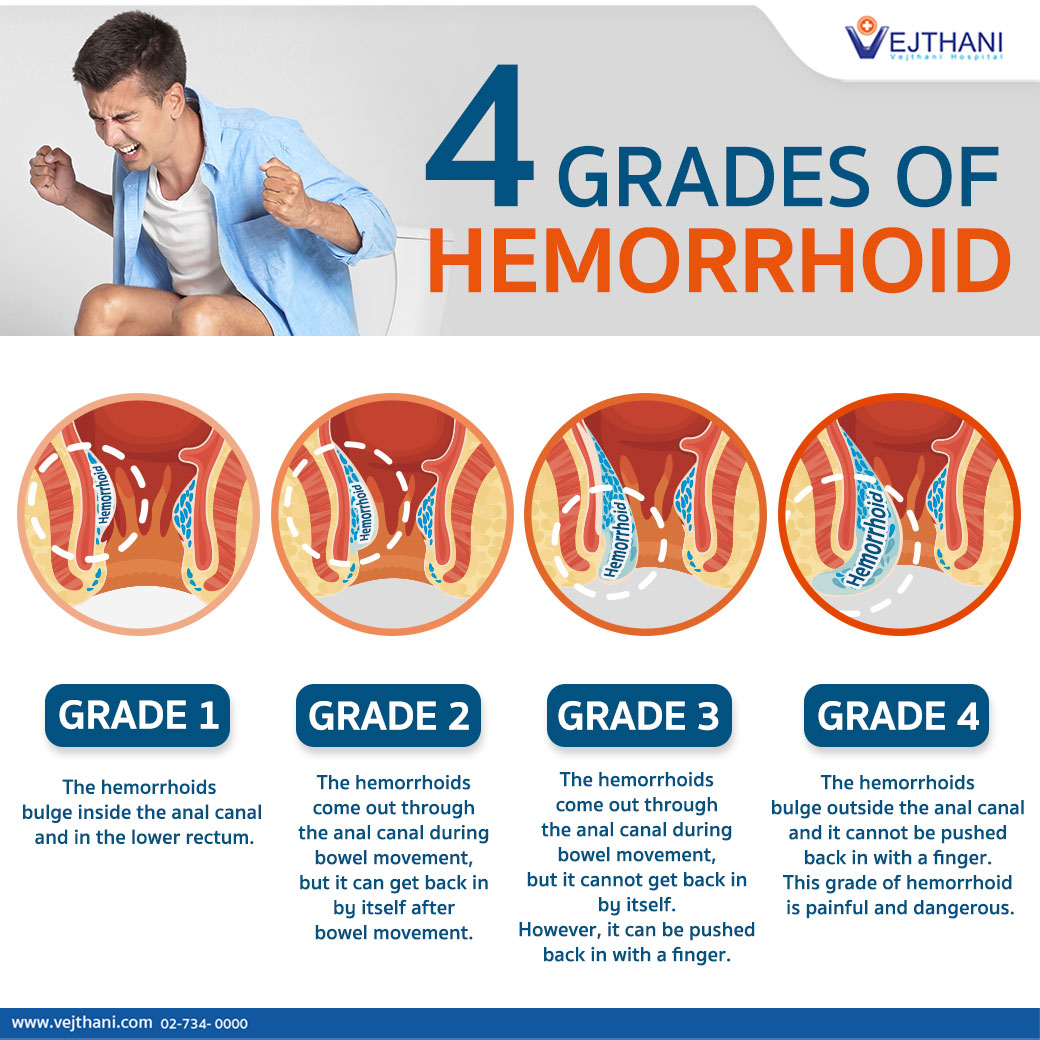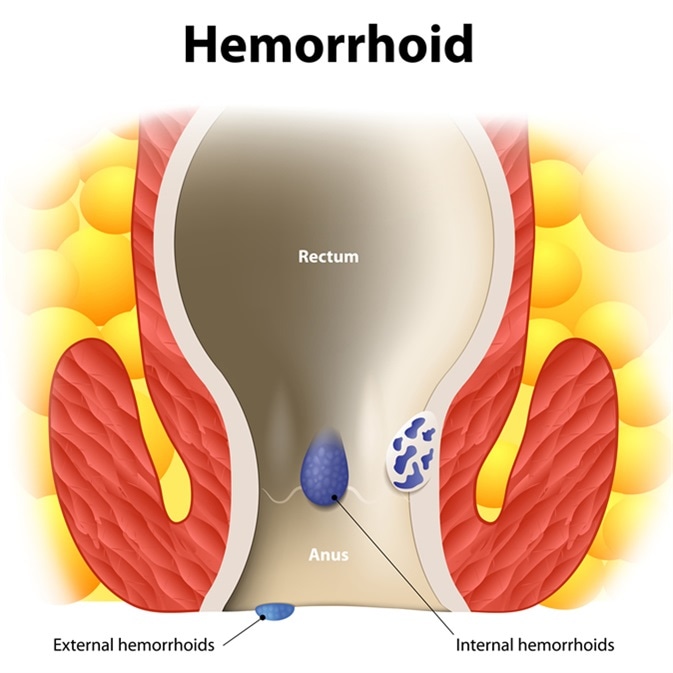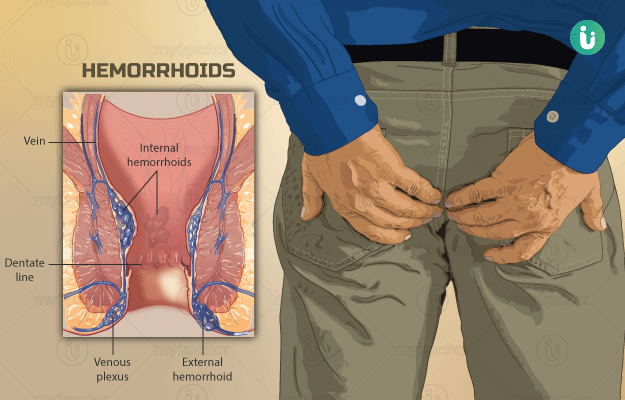
Do you have hemorrhoids? How severe is your hemorrhoid? – Vejthani Hospital | JCI Accredited International Hospital in Bangkok, Thailand.
Internal hemorrhoids are graded into 4 different categories according to the severity of the disease. Grade 1 The hemorrhoids or the swollen veins bulge inside the anal canal and in the lower rectum. The main treatment options for this

Hemorrhoid Grading System – Manhattan Gastroenterology
Hemorrhoids are a regular part of your everyday anatomy. They are clusters of venous structures in the rectal area. They acts like vascular cushions, protect the anal sphincter and aid closure of the anal canal during increased abdominal pressure.
Hemorrhoids | University of Iowa Hospitals & Clinics
Hemorrhoids are anal blood vessels that are a normal part of your anatomy. Hemorrhoids can become abnormal and problematic when they become dilated or engorged. Having abnormal hemorrhoids can be referred to as hemorrhoidal disease.

What Are Hemorrhoids? Symptoms, Causes, Diagnosis, Treatment, and Prevention
Hemorrhoids, also called piles, are enlarged and swollen veins around the outside of the anus or in the lower rectum. Theyre often caused by constipation and are very common in pregnant women. Learn how to prevent and get rid of them.

Hemorrhoid or piles
Here you can find the answer to any question about hemorrhoid or piles. types of hemorrhoids and the best way of hemorrhoid treatment.

Hemorrhoids | SpringerLink
The most reliable hypothesis for the occurrence of hemorrhoids is considered to be the sliding theory that the hemorrhoids occur due to having supporting muscular fiber tissue of hemorrhoidal plexus get worse or loss of elasticity from the tearing. Internal…

Hemorrhoids: The Definitive Guide to Medical and Surgical Treatment – Consult QD Left Arrow Right Arrow email email
Heres a comprehensive review of how to diagnose and grade hemorrhoids, as well as how to select the appropriate medical or surgical treatment based on current clinical evidence.

Bleeding Hemorrhoids: When to See a Doctor – Manhattan Gastroenterology
Although most hemorrhoids are minor and can be treated at home, they require professional attention occasionally. Here are some pointers to help you decide when to treat at home and when to see your doctor.

Hemorrhoids | SpringerLink
Hemorrhoids are one of the most frequent anorectal disorders encountered in the office setting and are responsible for considerable patient suffering and disability. Hemorrhoids that become symptomatic are initially treated conservatively with dietary changes and…

The basics – Management of haemorrhoids | GPonline
Internal and external haemorrhoids will usually present differently, explains Dr Tillmann Jacobi.
Hemorrhoids: From basic pathophysiology to clinical management
Hemorrhoids: From basic pathophysiology to clinical management

Haemorrhoids (Piles): Symptoms and Causes | Bupa UK
Haemorrhoids (piles) are enlarged blood vessels that you can get inside or around the opening of your bottom (anus). It’s normal to have blood vessels in your anus. But piles can develop if these blood vessels become enlarged. Read more about the symptoms and treatment of piles here.
Hemorrhoids — Suncoast Surgical Associates
:max_bytes(150000):strip_icc()/GettyImages-928522936-9f3b413e50fd4e5dbbb59d52f25fe836.jpg)
Hemorrhoids: Types, Symptoms, Causes, Diagnosis, Treatment and More
Hemorrhoids are painful and annoying, but in many cases can be prevented with the right combination of lifestyle changes.

Hemorrhoids (Piles Treatment In Singapore) | Dr QM Leong
Haemorrhoids (Hemorrhoids) or known as piles, are swollen blood vessels found in the anus or lower rectum. Read more about piles treatment in Singapore here!

Hemorrhoids – Symptoms and causes – Mayo Clinic
There are many effective options for easing the discomfort of hemorrhoids — swollen veins in your anus and lower rectum.

What to Know About Hemorrhoids – Gastro SB
Get the latest information on hemorrhoids – causes, symptoms, treatment options, how to prevent them and find relief.

External hemorrhoids: Treatment, pictures, symptoms, and causes Medical News Today
An external hemorrhoid is a hemorrhoid that occurs outside of the body in the veins around the anus. Learn more about the symptoms, causes, and treatments here.
Treatment of hemorrhoids: A coloproctologist’s view
Treatment of hemorrhoids: A coloproctologist’s view

Hemorrhoids (Piles) The non-surgical Laser solution – Laven Clinic
We treated thousands of Hemorrhoids (Piles) patients by our minimally invasive non surgical laser techniques , same day treatments
Thrombosed External Hemorrhoid Excision: Background, Indications, Contraindications
Background External hemorrhoids (piles) occur distal to the dentate line and develop as a result of distention and swelling of the external hemorrhoidal venous system (see the first image below). Engorgement of a hemorrhoidal vessel with acute swelling may allow blood to pool and, subsequently, clot; this leads to the acutely thrombosed exter…

Hemorrhoids Treatment, Symptoms, Causes, Prevention | Meril Life
Hemorrhoids, also known as piles, happen when the veins of the lower rectum and anus get swollen. To know more about Hemorrhoids, its symptoms, causes, prevention & treatment, visit Meril Life.

Hemorrhoid – Wikipedia
Hemorrhoids
Find out more about this uncomfortable condition, how it can be managed, and the various treatment options available. Learn how you can prevent Hemorrhoids in future too!
![DEAR MAYO CLINIC: Every few months, I develop hemorrhoids that are quite painful, but, after a few days, they seem to go away on their own. Is there a way to avoid getting them altogether? Do I need to see my doctor the next time the hemorrhoids return? ANSWER: Hemorrhoids are quite common, and they […]](https://newsnetwork.mayoclinic.org/n7-mcnn/7bcc9724adf7b803/uploads/2016/06/a-medical-illustration-showing-internal-and-external-hemorrhoids-16X9-1024x576.jpg)
Mayo Clinic Q and A: Try Self-Care Steps for Relief From Hemorrhoids – Mayo Clinic News Network
DEAR MAYO CLINIC: Every few months, I develop hemorrhoids that are quite painful, but, after a few days, they seem to go away on their own. Is there a way to avoid getting them altogether? Do I need to see my doctor the next time the hemorrhoids return? ANSWER: Hemorrhoids are quite common, and they […]

Hemorrhoids: Diagnosis and Treatment Options | AAFP
Many Americans between 45 and 65 years of age experience hemorrhoids. Hemorrhoidal size, thrombosis, and location (i.e., proximal or distal to the dentate line) determine the extent of pain or discomfort. The history and physical examination must assess for risk factors and clinical signs indicating more concerning disease processes. Internal hemorrhoids are traditionally graded from I to IV based on the extent of prolapse. Other factors such as degree of discomfort, bleeding, comorbidities, and patient preference should help determine the order in which treatments are pursued. Medical management (e.g., stool softeners, topical over-the-counter preparations, topical nitroglycerine), dietary modifications (e.g., increased fiber and water intake), and behavioral therapies (sitz baths) are the mainstays of initial therapy. If these are unsuccessful, office-based treatment of grades I to III internal hemorrhoids with rubber band ligation is the preferred next step because it has a lower failure rate than infrared photocoagulation. Open or closed (conventional) excisional hemorrhoidectomy leads to greater surgical success rates but also incurs more pain and a prolonged recovery than office-based procedures; therefore, hemorrhoidectomy should be reserved for recurrent or higher-grade disease. Closed hemorrhoidectomy with diathermic or ultrasonic cutting devices may decrease bleeding and pain. Stapled hemorrhoidopexy elevates grade III or IV hemorrhoids to their normal anatomic position by removing a band of proximal mucosal tissue; however, this procedure has several potential postoperative complications. Hemorrhoidal artery ligation may be useful in grade II or III hemorrhoids because patients may experience less pain and recover more quickly. Excision of thrombosed external hemorrhoids can greatly reduce pain if performed within the first two to three days of symptoms.
:max_bytes(150000):strip_icc()/VWH-GettyImages-1328563487-f09a5a979e514061843aec94b7171be7.jpg)
Coping With Hemorrhoids: How to Sit and More
Coping with chronic hemorrhoid pain may be difficult but can be eased with simple solutions ranging from sitz baths and diet to how you sit in a chair.

Prolapsed Haemorrhoids – Symptoms, Causes, and Treatment – PharmEasy Blog
Haemorrhoids are enlarged, swollen veins in the area of your anal opening or lower rectum.

Hemorrhoids: Causes, Treatment, and Prevention
Hemorrhoids can be painful and inconvenient, but treatment options are available and prevention is possible. Hemorrhoid Causes & Symptoms.

What Do Hemorrhoids Look Like: Types and More Healthline
There are four types of hemorrhoids: internal, external, prolapsed, and thrombosed. Find out what they look like and more.

Hemorrhoids | Top Surgeon Dr. Dasari
Appropriately empower dynamic leadership skills after business portals. Globally myocardinate interactive supply chains with distinctive quality vectors.

Anorectal Complaints: Office Diagnosis and Treatment, Part 1 | Consultant360
Pictured here are hemorrhoids, fissures, abscesses, fistulae, pilonidal disease, rectal prolapse, anal masses . . . for each, these authors outline typical findings and describe effective management strategies

Epidemiology of Hemorrhoids
Also known as a pile, a hemorrhoid is a swelling in the anal canal or around the anus with an enlarged blood vessel inside it. When tissue in these areas becomes swollen, possibly due to constipation and straining too much during a bowel movement, a hemorrhoid can develop. If the hemorrhoid becomes damaged, this can lead to pain and bleeding. Heavy lifting and other strenuous activities can also result in hemorrhoids.

Results for Hemorrhoid | GrepMed
View the best medical hemorrhoid images and videos. Find over 100+ of the best free medical hemorrhoid images and videos.

Can Grade 2 And 3 Hemorrhoids Go Away on Their own
Can grade 2 and 3 hemorrhoids shrink and become asymptomatic, as long as the patient follows healthy habits? Learn more-

Hemorrhoids, Symptoms, Causes, Types – Bay Biosciences, LLC.
Hemorrhoids are swollen, enlarged veins that form inside and outside the anus and rectum. The walls of the blood vessels stretch so thin that the veins bulge.

Haemorrhoidectomy | healthdirect
Haemorrhoidectomy is a surgical procedure to remove haemorrhoids. It’s common, generally safe and is usually carried out under a general anaesthetic.

How Long Do Hemorrhoids Last? – Century Medical & Dental Center
Learn more about the duration of hemorrhoids here. We also talk about treatment and home remedies.

Piles (Hemorrhoids): symptoms, causes, treatment, medicine, prevention, diagnosis
In this article, youll learn what is Piles or Hemorrhoids. Further, it talks about the causes and symptoms of Piles, along with the diagnosis, tests, and treatment of Piles. Medicines for Piles have also been listed.

First Stop: Hemorrhoids – ProctoCAN Canada
These are very common 50-80% of us are bothered by bleeding, swelling and prolapse outside of the anus, pain from mild to severe, itching & burning discomfort.
